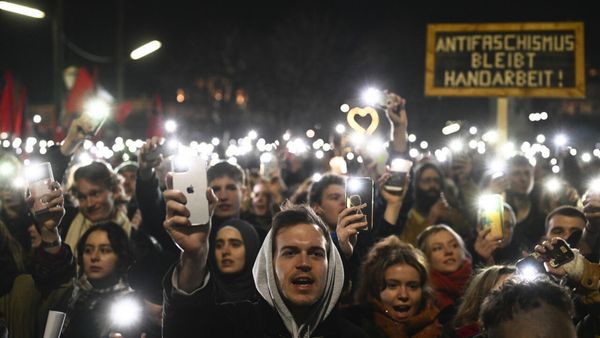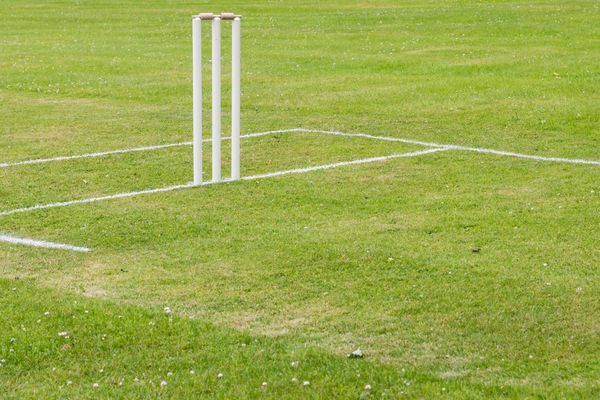
NEW DELHI : Back in July 2020, for the first time in its 169-year history, the Indian Railways offered 109 routes to private players to operate trains on. It drew just two bidders, one of which was the Indian Railway Catering & Tourism Corporation (IRCTC), majority owned by the government.
In August 2021, the tender process for the trains was put on hold.
This privatization tender typifies the Railways’ current shackled plight, how it is trying to unshackle itself, and the kind of challenges it is up against as it seeks to support itself and move forward.
Today, the Indian Railways needs such transfer or sharing of rights, even outright sales of its assets, more than ever. Financial support from the Central government Budget, which is due to be presented next week for 2022-23, is shrinking in proportion to its needs. At the same time, the covid-19 pandemic has dealt a huge blow to its operational finances. Monthly passenger volumes are still only at about half the pre-pandemic levels, resulting in annual operating revenues in 2020-21 dipping to their lowest levels since 2013-14.

The Railways is crucial for the Indian economy, being the only viable mode of transport for millions of passengers, as well as to ferry essential freight such as coal. Even as India’s ‘national transporter’ is looking to modernize and upgrade its dated infrastructure, it is struggling to raise the requisite amounts of investment.
The budget speech of 2021 announced a National Rail Plan (NRP) for India, which aims to create a ‘future ready’ railway system by 2030. The NRP proposes a host of operational, infrastructural and commercial policy initiatives to increase the modal share of the Railways in freight transport to 45%, from 27% currently. Public-private partnerships (PPP) are a key financing mechanism to implement the NRP. In a reply to the Rajya Sabha in December 2021, Railways minister Ashwini Vaishnaw had said that railway infrastructure would need an investment of ₹50 trillion between 2018 and 2030.
Against this backdrop, the Railways’ efforts to draw the private sector’s capital, enterprise and efficiencies assume great importance. The Railways has been trying to monetize its assets to make them sweat more, and thereby also raise fresh funds for operations and expansion. This means having private players operate passenger trains and freight corridors, manage stations in a model similar to that in place for airports, and sell land parcels, among others.
With the pandemic, it needs all these to work more than ever. Meanwhile, there’s little it can do about its high fixed costs—salaries, pension liabilities and managing infrastructure. However, so far, its attempts at sparking private interest have not yielded the results it is seeking.
Pandemic Blow
Meanwhile, passenger numbers—which anyways is a loss-making stream for the Railways—remain far lower than pre-pandemic levels. In November last year, 377 million passengers travelled by the Indian Railways—around 52% of the levels in January 2020. For several months during India’s strict lockdown, passenger levels were next to nothing. The general reluctance to travel has also undermined non-essential travel during the other months. As a consequence, revenues accruing from passengers, which accounted for 30% of Railways’ revenues in 2019-20, fell by 70% in 2020-21.
Its other revenue stream, freight, is profitable. Goods traffic has been relatively stable in comparison, and is now at marginally higher levels than pre-pandemic months. A total of 117 million tonnes of freight was transported by the Railways in November 2021, which was 6% higher than what it did in January 2020. However, the decline in economic activity has meant that freight volumes and revenues have not risen along expected lines. In aggregate, total revenue receipts amounted to ₹1.46 trillion in 2020-21, a 16% fall from 2019-20 (see chart). Lower revenues mean lower surpluses—and lesser resources to commit to investment.
Funding Capex
The Railways needs to modernize. Thus, increased capital expenditure, which builds new assets and adds a multiplier to revenues, is crucial. To be sure, capital expenditure by Railways has been on the rise. The share of capital expenditure in Railways’ total expenditure has increased from 28% in 2014-15 to 53% in 2020-21.
In 2020-21, its capital expenditure is estimated at an all-time high of ₹1.61 trillion, about 2.8 times the amount six years ago, in 2014-15. For 2021-22, the budgeted capital expenditure of the Railways stands at ₹2.15 trillion, a rise of about 33% over the previous year.
However, the rise in Railways’ capital expenditure has been on the back of increased borrowings. Broadly speaking, there are four sources of capital receipts for the Railways: the Centre (which owns the Railways), the surplus generated by Railways from its own operations, borrowings, and various modes of private capital. As discussed earlier, the Railways’ own internal revenues have fallen in the past year.
After a dip in 2020-21, the Central government did commit higher capital expenditure in 2021-22. Of the total ₹2.15 trillion planned in the ongoing financial year, about ₹1.07 trillion is budgeted to come from the Central government. For the Centre, this allocation amounts to 19% of its total budgeted capital expenditure, and is the third-highest across all ministries, after defence and road transport. However, this is not sufficient to meet the increasing capital needs of the Railways, which is compelled to increasingly depend on external sources of borrowing.
Meanwhile, what the Railways calls ‘extra budgetary resources’ have increased 10-fold, from about ₹11,000 crore in 2014-15 to about ₹1.28 trillion in 2020-21. Extra budgetary resources (EBR) can be further broken into two components. The first component is borrowings, from institutions like the Indian Railways Finance Corporation (IRFC), Life Insurance Corporation (LIC) and World Bank. The Railways has to pay interest on these loans, and also repay them. For instance, it paid lease charges of ₹11,500 crore in 2019-20—5.6% of the Railways’ revenues—to IRFC.
Private Push
The second component of EBR is equity capital, which does not create a future liability for the Railways. This primarily comes from the public-private partnerships (PPP) model, which involves private entities partnering the Railways to fund and operate projects. The Railways is looking to raise more external capital through PPPs. In 2020-21, for example, it raised ₹11,500 crore through the PPP route. The bulk of this was expenditure on new line projects, traffic facilities, and road safety works.
During the online inauguration of the revamped Gandhinagar railway station on 16 July 2021, Prime Minister Narendra Modi made a push for Railways reforms through the PPP route and monetization of assets. He said: “Railway stations can become a power centre for economic activities…therefore, we believed railways needed a complete reform. We started developing railways not as a service, but as an asset."
Offering private players a piece of the 109 passenger train routes in July 2020 reflected this operating philosophy. For the Railways, it would mean meeting two objectives simultaneously: improve the health of its loss-making passenger stream while using private capital to improve that infrastructure.
A total of 151 trains were proposed to be operated on these 109 routes located across 12 clusters of the Railways. In its notice inviting request for qualification, the ministry quoted an indicative project cost for each of these 12 clusters. They ranged from ₹2,329 crore to ₹3,221 crore, and added up to ₹30,099 crore.
For example, the Delhi-2 cluster had an indicative project cost of ₹2,329 crore. This cluster had 12 routes, with to and fro connections between Delhi and Barauni, Guwahati, Jaipur, Kathgodam, Pune and Udaipur. The operating period was 35 years. The private player would invest in the rolling stock (engine and wagons) and would have the freedom to price both train and non-train services, and it would pay a certain revenue share to the Railways. However, the financial bidding stage saw only two bidders, the government-owned IRCTC and Megha Engineering & Infrastructures. The tender process was put on hold.
The main reason for the lack of the private sector’s interest in running passenger trains was the absence of a compelling business rationale. Although the operators would be free to set fares on these routes, competition from government-run trains, especially premium ones such as the Shatabdi, Rajdhani and Humsafar would mean that their fares would have to be competitive.
Besides, the timing of the tender process was not optimal. The bidding process began at the peak of the first wave of the pandemic. Given that the short- and medium-term outlook for travel was clouded, the private sector deemed the trains a risky investment.
Monetization Push
In August 2021, the Centre announced the National Monetization Pipeline (NMP), where it sought to transfer revenue rights of government-owned assets to private parties for a contracted transaction period in exchange for upfront money, revenue share, and commitment of investments in the assets.
An indicative monetization value of ₹1.5 trillion has been outlined for the Railways between 2021-22 and 2024-25, accounting for 26% of the overall NMP in value terms. The NMP target from railway assets for 2021-22 is ₹17,810 crore, which means 88% of the target will up for reckoning in the next three years.
Of the ₹1.5 trillion target, ₹76,250 crore is budgeted from the redevelopment of 400 stations and ₹21,642 crore from passenger train operations, primarily through PPP projects. Further, assets such as tracks, good sheds, and freight corridors have been earmarked for monetization.
A significant component of the monetization revolves around the land parcels owned by the Railways, especially adjoining stations. The ministry of railways owns about 477,000 hectares of land, according to a response to a Right to Information (RTI) query filed in 2018. While data on total unutilized land is unavailable, the railways has plans to monetize it. It has identified 12,000 acres of surplus land that states can buy from it at market value.
The Rail Land Development Authority (RLDA) is tasked with the commercial utilization of railways land. Since 2009-10, the RLDA has also been assigned the responsibility of developing multi-functional complexes at railway stations. As on March 2020, 75 commercial sites, amounting to 275 hectares, have been allotted to the RLDA for redevelopment. In 2019-20, ₹930 crore was realized from commercial development, an 11-fold increase over 2018-19. Of this, ₹760 crore was transferred to the ministry of railways in 2019-20. These are small pickings, given its overall scale and sweep of operations.
The Indian Railways is at the crossroads today. Its revenues have fallen, its borrowings have increased and yet it is struggling to raise crucial investment to modernize. With sustained investment, it can become a crucial vehicle for India’s future economic growth. For this to take place, however, it needs to be able to generate additional resources through both conventional and new means. The success of the monetization programme, going forward, will crucially determine the ability of the Indian Railways to improve infrastructure, develop capacity and modernize effectively.
The writer is with howindialives.com







